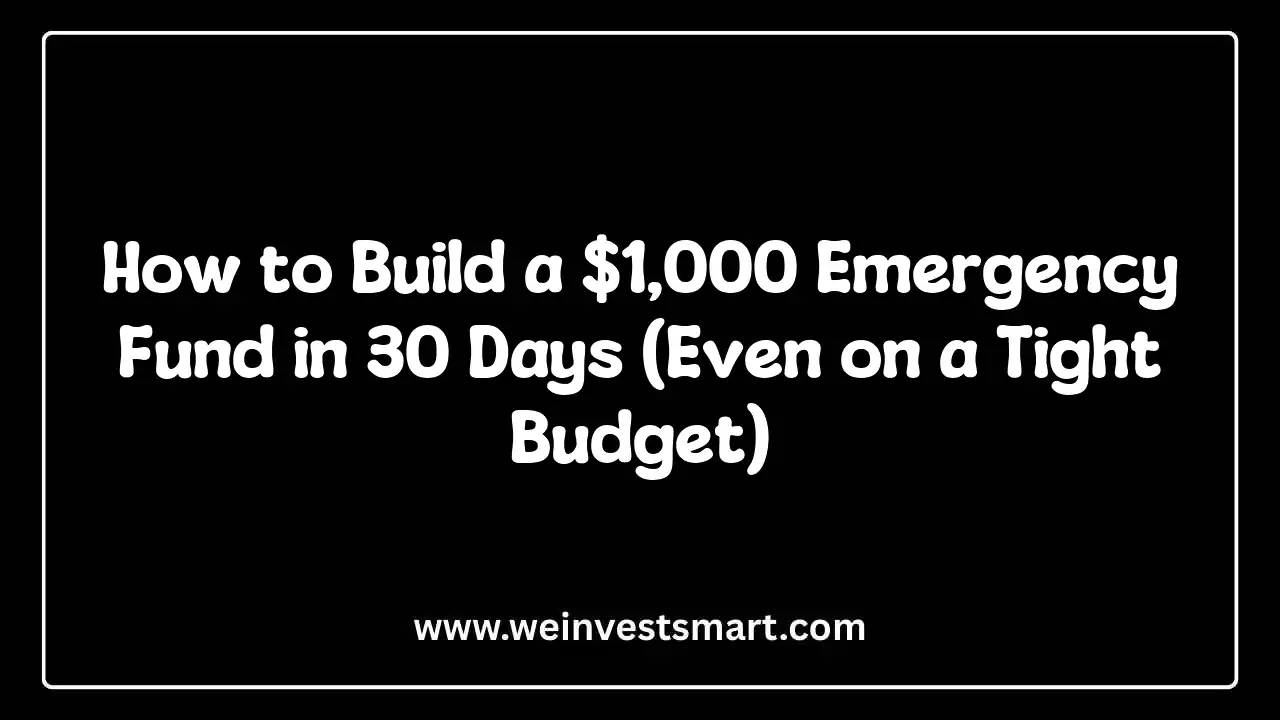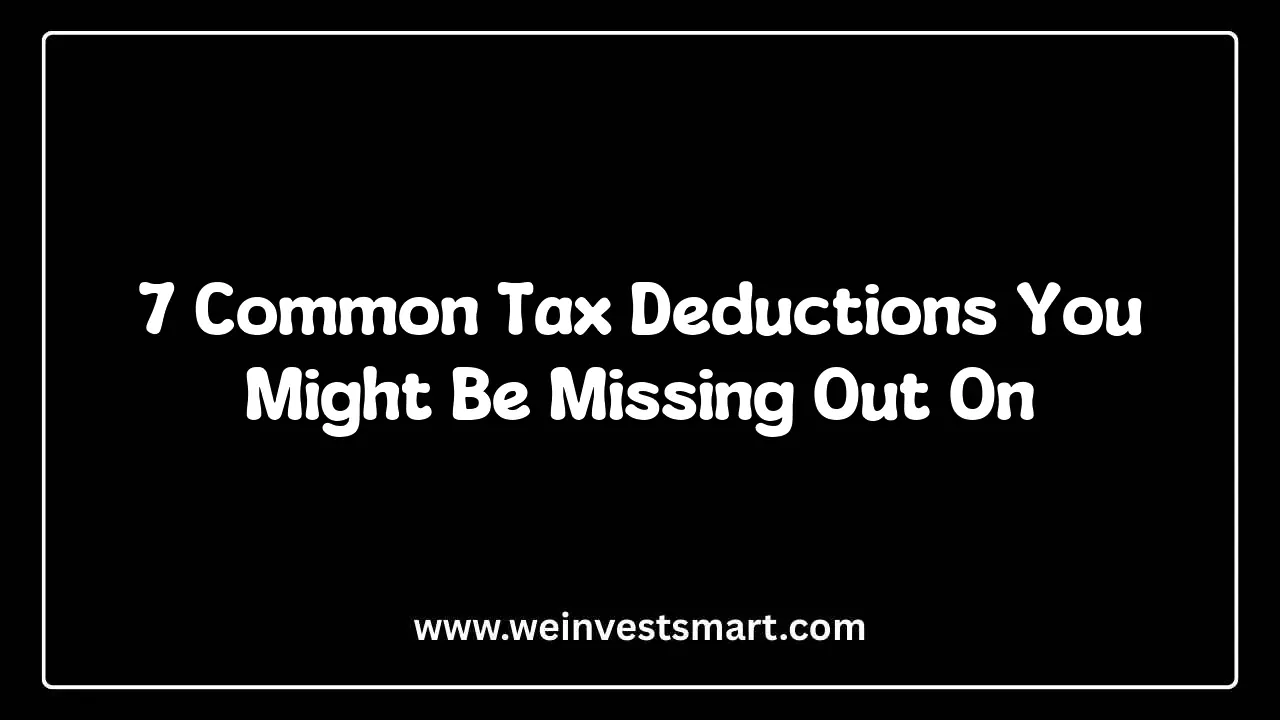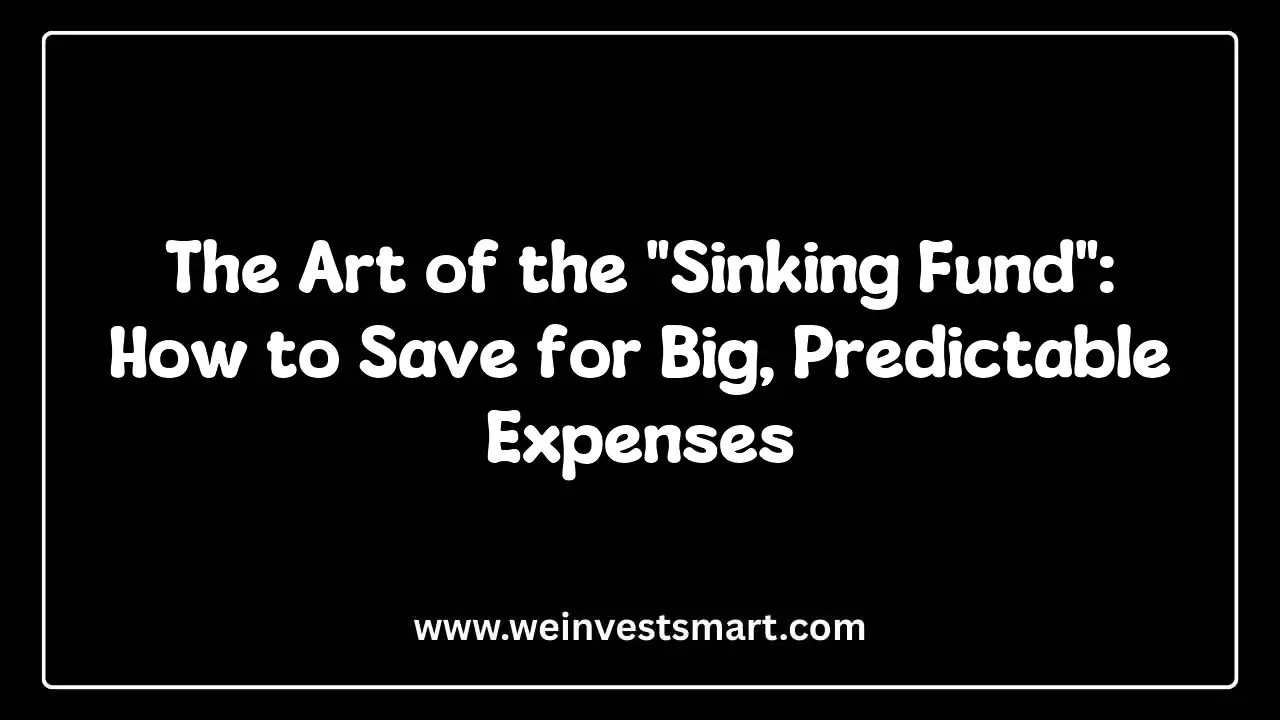· WeInvestSmart Team · personal-finance · 9 min read
What Are High-Yield Savings Accounts (HYSAs) and Why You Need One Right Now
Introduce readers to HYSAs as the ideal place to park their emergency fund. Compare the interest rates to traditional brick-and-mortar savings accounts to highlight the massive difference.
Most of us have a complicated relationship with our savings accounts. We know we’re supposed to have one, so we dutifully open an account at the same big, brick-and-mortar bank where our parents have banked for 40 years. We see our money sitting there, safe and sound, earning a microscopic amount of interest. But here’s the uncomfortable truth: your traditional savings account is a relic. It’s a financial product from a bygone era that has been rendered obsolete by a far superior alternative. Going straight to the point, if your emergency fund or short-term savings are sitting in an account earning 0.01% interest, you are not saving; you are actively allowing your money to lose its value.
We live in a world where we demand the best technology in our pockets, the fastest internet in our homes, and the most convenient streaming services. Yet, when it comes to our money, we settle for financial products that are the equivalent of a dial-up modem. The funny thing is that there’s a better, faster, and far more profitable option available to everyone, and it’s just as safe as your old-school account.
But what if we told you that with a simple, ten-minute action, you could start earning 10, 50, or even 100 times more interest on your savings, with no extra risk? Here’s where things get interesting. That tool is called a High-Yield Savings Account (HYSA). And this is just a very long way of saying that it’s time to stop letting your bank profit from your complacency and start making your savings work for you.
What is a High-Yield Savings Account (HYSA)?
Before we get into the details, let’s establish what an HYSA actually is. Going straight to the point, a high-yield savings account is exactly what it sounds like: a savings account that pays a much higher interest rate than the national average for standard savings accounts.
That’s it. There is no other functional difference. It is not a risky investment. It is not a complex financial product. It is a simple, safe, liquid home for your cash. The only significant difference is the number on the right side of the decimal point.
But where do these incredible rates come from? The secret is in the business model.
- Traditional Banks have enormous overhead costs. They have to pay for thousands of physical branch locations, legions of tellers, and expensive marketing campaigns. Their business model relies on paying you next to nothing for your deposits while they lend that money out at much higher rates.
- Online Banks, which are the primary providers of HYSAs, have a fraction of the overhead. They have no physical branches. Their entire operation is digital. Because their costs are so much lower, they can pass those savings on to their customers in the form of much higher interest rates, or APY (Annual Percentage Yield).
You get the gist: It’s the same product, just with a more efficient, modern business model. It’s the difference between hailing a taxi on the street and calling an Uber.
The Shocking Math: HYSA vs. Traditional Savings Accounts
Words don’t do the difference justice. Let’s look at the cold, hard numbers.
The national average interest rate for a traditional savings account is currently hovering around 0.07% APY. That is not a typo. It is seven-hundredths of one percent.
A competitive high-yield savings account, on the other hand, might offer a rate of 4.50% APY or even higher, depending on the current economic environment.
Let’s use a simple case study. Imagine you have a $10,000 emergency fund that you plan to keep saved for the next five years.
Scenario 1: You use a Traditional Savings Account at 0.07% APY
- Interest earned after Year 1: $7.00
- Interest earned after Year 5: $35.01
- Total Balance after 5 Years: $10,035.01
Scenario 2: You use a High-Yield Savings Account at 4.50% APY
- Interest earned after Year 1: $450.00
- Interest earned after Year 5: $2,461.82 (thanks to compounding)
- Total Balance after 5 Years: $12,461.82
But what do we do with this information? And here is where things get interesting. By choosing the HYSA, you have earned an extra $2,426.81 of pure, risk-free profit. You did nothing. You took no risks. You simply chose a better home for your money. To earn that same amount in the traditional account would take over 346 years.
This isn’t just about earning a little extra cash. This is the difference between your emergency fund passively losing purchasing power to inflation and actively fighting to keep up with it, or even grow.
Are High-Yield Savings Accounts Safe? The FDIC Insurance Guarantee
This is the number one question and fear that keeps people tethered to their big-name banks. “I’ve never heard of this online bank,” they say, “Is my money safe?”
Going straight to the point, the answer is an unequivocal yes, as long as the account is FDIC insured.
The FDIC, or Federal Deposit Insurance Corporation, is an independent agency of the United States government. It protects depositors against the loss of their insured deposits in the event that an FDIC-insured bank or savings association fails.
Here’s what this means for you:
- Your money in an HYSA at an FDIC-insured institution is protected by the full faith and credit of the U.S. government.
- The standard insurance amount is $250,000 per depositor, per insured bank, for each account ownership category.
That is to say, as long as your balance is under $250,000, your money is just as safe—if not safer—in an online, FDIC-insured HYSA as it is in the vault of the brick-and-mortar bank down the street. Before opening any account, simply look for the “Member FDIC” logo on the bank’s website.
Why an HYSA is the Perfect Home for Your Emergency Fund
Now that we know what an HYSA is and that it’s safe, let’s talk about its perfect use case: your emergency fund.
Your emergency fund is your financial shield. It’s 3-6 months of essential living expenses set aside for unexpected life events like a job loss, a medical emergency, or an urgent home repair. The money in this fund has two non-negotiable requirements:
What is a High-Yield Savings Account FAQ
What is a high-yield savings account?
A high-yield savings account is a savings account that offers higher interest rates than traditional savings accounts, typically 4-5% APY.
How do high-yield savings accounts work?
They work like regular savings accounts but with higher interest rates. You deposit money, and it earns interest compounded daily or monthly.
What are the benefits of a high-yield savings account?
Benefits include higher interest rates, FDIC insurance, liquidity, and protection against inflation.
Are high-yield savings accounts safe?
Yes, they are safe as they are FDIC-insured up to $250,000, just like traditional savings accounts.
How do I open a high-yield savings account?
You can open one online through banks like Ally or Marcus by Goldman Sachs. Provide identification and link a checking account for transfers.
- It must be safe. You cannot risk your emergency fund losing value in the stock market.
- It must be liquid. You need to be able to access the money quickly when a true emergency strikes.
A traditional savings account meets these criteria, but it fails miserably on a third, crucial point: it doesn’t grow. An HYSA, however, is the perfect trifecta:
- Safety: It’s FDIC-insured. Check.
- Liquidity: You can typically transfer money to your checking account in 1-3 business days. Check.
- Growth: It offers a competitive interest rate that helps your money combat the corrosive effects of inflation. Check.
This sounds like a trade-off, because you might have to wait a day or two to access your cash, but it’s actually a desirable thing. We covet this slight “friction” because it adds a psychological barrier that prevents you from dipping into your emergency fund for non-emergencies. If the money is sitting in the same bank as your checking account, it’s too easy to transfer it over for an impulse purchase. An HYSA keeps your emergency money out of sight and out of mind, but still easily accessible when you truly need it.
How to Choose the Best High-Yield Savings Account
The market for HYSAs is competitive, which is great for consumers. When you’re ready to open one, here are the key factors to compare:
- Highest APY (Annual Percentage Yield): This is the most obvious factor. You want the highest return possible. Be sure to check if an attractive rate is just a temporary “promotional” rate.
- No Monthly Fees or Minimum Balance Requirements: A true HYSA should be free. There’s no reason to pay a monthly maintenance fee or be required to keep a minimum balance. The best accounts have a $0 minimum to open and no fees.
- Ease of Use: Check out the bank’s website and mobile app. Is it modern, user-friendly, and easy to navigate? You want an experience that makes it simple to transfer money and check your balance.
- FDIC Insurance: As mentioned, this is non-negotiable. Verify that the bank is an FDIC member.
- Customer Service: Read reviews about the bank’s customer service. While you may not need to interact with them often, you want to know that a helpful human is available if a problem arises.
The Bottom Line: Stop Settling for Financial Leftovers
Your relationship with your bank should be a two-way street. You provide them with your capital, and they should pay you a fair price for it. For decades, large traditional banks have relied on customer inertia and a perceived sense of security to pay almost nothing for that privilege.
Opening a high-yield savings account is your declaration that you will no longer accept financial scraps. It is one of the simplest, fastest, and most impactful financial decisions you can make, and it requires zero risk. It is the first step in shifting from a passive consumer of financial products to an active, informed participant in your own financial well-being.
And this is just a very long way of saying that your money should always be working for you, even the money you’re not investing. So, take the ten minutes. Do the research. Open the account. Your future self, richer by thousands of dollars, will thank you for it.
This article is for educational purposes only and should not be considered personalized financial advice. Consider consulting with a financial advisor for guidance specific to your situation.



